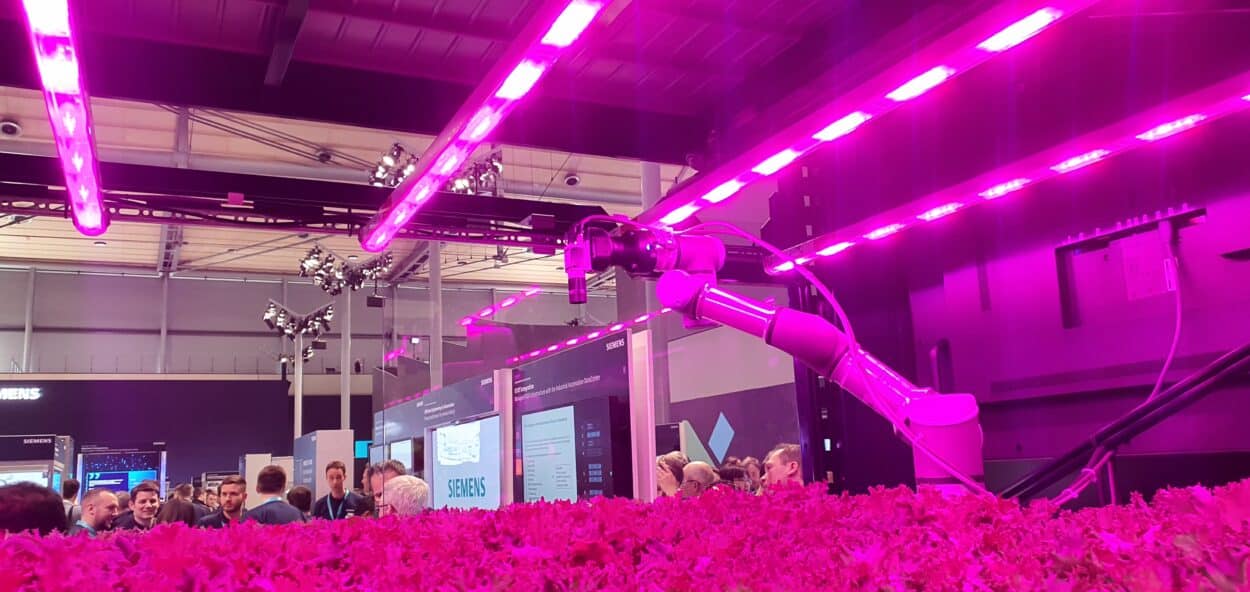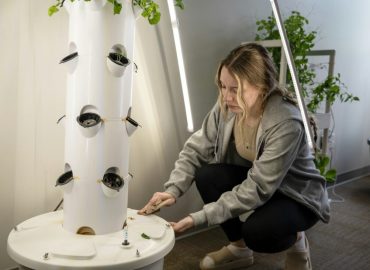Siemens Vertical Farming Technology

Siemens At Hannover Messe 2023
Siemens Vertical Farming Technology | Camille Rustici |
Vertical farming is a solution to the challenges of traditional agriculture especially in urban areas. With climate change causing increasing pressure on traditional agriculture, indoor farming offers a resource-conserving alternative that can meet the growing challenges of food supply and food security. By 2050, according to expectations, 10 billion people will be living on our planet, and they will all need to be fed.
However, new agricultural land is becoming scarce, and farmers are increasingly struggling with water shortages. Indoor farming offers an intelligent solution that can reliably and energy-efficiently create perfect growing conditions for plants.
According to experts, indoor farming uses 95% less water than traditional farming and enables it to yield 300 times more than conventional farmland without using any pesticides. Besides, it can be powered by solar energy.
Since last December, Siemens has been working with 80 Acres Farms, a leading indoor farming company based in Ohio, USA, to digitalize and scale their indoor farms.
At Hannover Messe 2023, they showcased a vertical farming installation on Siemens’s booth. The idea is that to achieve optimal growth and yield, it is crucial to monitor the process closely. This is where Siemens technology comes into play.
Siemens provides power distribution equipment and energy and building management technologies to monitor the fire, security, and power distribution systems via a single interface. Their automation solutions are also being used to optimize indoor farms’ harvesting processes. Edge devices and human-machine interfaces monitor crop management and control environmental conditions.
According to a Siemens spokesperson that we met at the booth,
“One of the most critical aspects of vertical farming is the irrigation system. With our solutions and sensors, the environment where the plants grow is monitored around the clock. The CO2 concentration, humidity, and temperature parameters are continuously monitored and adjusted to ensure that the plant’s environment is optimal for growth. Nutrient content in the soil can be modified to foster ideal plant growth. The system ensures that the plants get just the right amount of water they need without wasting any. The quality of the water and the pH levels are also closely monitored. ”
Purple LED lights are used to provide the necessary light spectrum for plants to thrive. Depending on the plant’s needs, the lighting can be adjusted from purple to blue.


“All of these data are collected by industrial edge devices that visualize the data, making it easier to analyze and control. With the app, you can monitor and adjust everything from lighting intensity to watering schedule.”
In addition to the technology, the farm can integrate a UR cobot inside that has a vision system. The cobot takes images of the plants and scans the leaves to check if they have the right size or if the plant needs water or not.
“For example, in 10 days the plant should be 10 centimeters high. But if in the visualization system, you see that it is only 6 centimeters, it means there is something wrong, maybe the plant needs lighting, more nutrients, or more water.”
The data collected from the cobot can also be visualized in the same interface, to have a clear and complete overview of the plant’s health.
Original Article: https://emag.directindustry.com/2023/04/20/technology-and-nature-converge-at-hannover-messe-for-sustainable-industry-siemens-festo-vertical-farming-bioreactor/
The post Siemens Vertical Farming Technology appeared first on GROZINE.


